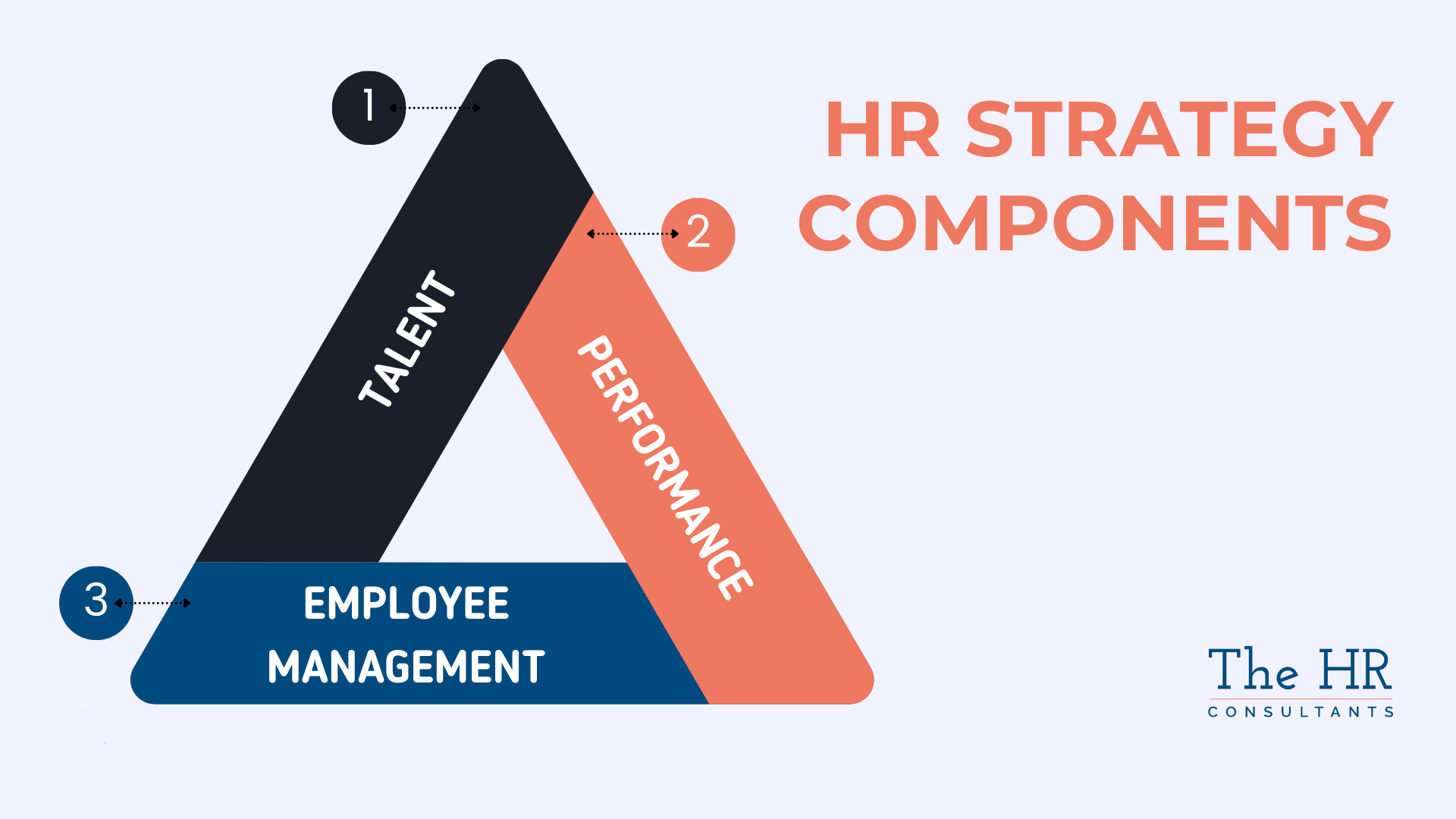"If implementing an empowering HR strategy is not within your typical business conducts, or if you simply do not understand why you need to have one, let's glance at this astonishing research fromGallup revealed it all in their 2018 Gallup State of the Global Workplace report, which reveals that companies with highly engaged employees yield 21% higher profitability than companies that do not pay much detail to the employee experience.
The HR Consultants are firm believers that a finely-designed and artfully-implemented HR strategy can be a marketing force to be reckoned with, capable of swaying opinions and decisions to your company's favour, even amidst high demands and increased competition.
Let's walk you through the reasons we hold effective HR strategies in such high regard, and methodically explore the best practices that can be adopted for maximising the potential of your business.
Table of Contents
Introduction to Human Resources Strategy
The Building Blocks of an Effective HR Strategy
Case Study: Tesco's 'People Strategy'
Core Components of HR Strategy: The Complete Blueprint
Strategic HR Management Tools and Techniques
Final Thought
Frequently Asked Questions
Introduction to Human Resources Strategy
If you want your business to achieve measureable business growth and stand out amidst competition, an effective and successful HR strategy is critical rather than optional.
Keep in mind that the strategic framework of HR isn't just about managing employees, it's about aligning your human capital with the vision you have for your business.
Understanding the Essentials of HR Strategies
Your HR strategy is the blueprint for managing your organisation's most valuable asset: its people.
This people HR strategy incorporates all aspects of employee engagement, from hiring and training to performance management and retention. The goal is to develop a strategy that not only addresses your current business needs but also anticipates future challenges.
This business strategy requires a reliable HR system that can adapt to changes in the market and workforce, ensuring your organisation remains agile and prepared for any potential business outcomes.
The Critical Role of HR in Business Success
As a strategic partner in your business, HR plays an important role that extends beyond simple administrative tasks. It's about aligning strategic business objectives with workforce management to boost your employee performance and propel your overall business performance.
The best HR strategies help ensure that the right people are in the right roles, are well-motivated, and possess the skills necessary for your business to excel.
The Building Blocks of an Effective HR Strategy
Your HR strategy is essential for harmonising your company’s employee development with its overarching strategies, ensuring that every aspect of your workforce management contributes directly to your company’s success.
Let's examine each block and understand how their assembly can redefine your human resource strategy.
Aligning HR Strategy with Brand Goals
To align your HR strategy with the evolving goals you have set for your brand, start by clearly defining both your short-term and long-term company goals.
From there, tailor your HR activities - such as recruitment, development, and retention—to directly support these goals.
For example, if your business aims to enhance innovation, your HR strategy should focus on attracting and nurturing creative talents, while establishing a supportive environment that encourages innovative thinking and out-of-the-box initiatives.
Examples of Successful HR Strategies in Action
Always examine specific cases that include successful HR strategy examples, where businesses have successfully aligned their HR strategies with their broader objectives. Learning from real-life enterprises' adoption of strategies that thrived in the UK market can be particularly insightful.
A useful HR strategy example can explain how a tech company might implement a talent acquisition strategy that prioritises digital skills to support its goal of accelerating product development. Another example could be a retail chain that focuses on training programmes to improve customer service skills, directly boosting customer satisfaction and sales.
Insider Tip: Take a look further down the line at our real-life HR success case study.
Utilising Human Capital for the Sake of Business Growth
To harness the power of human capital for effectuating genuine business growth, focus on people-centric solutions such as optimising your talent pool. This involves not only acquiring top talent but also continuously developing and retaining these talented individuals.
Implement targeted training programmes that conform with your strategic objectives, such as leadership development for HR professionals, or technical skills enhancement for IT staff.
By investing in employee well-being and growth, you can ensure that your workplace culture and overall workforce evolve in tandem with your business needs, ultimately driving innovation and improved operational efficiency.
Strategic Planning and Gap Analysis in HR
This involves mapping out the long-term path for your company's workforce development and employee engagement.
Begin with a gap analysis to identify the discrepancies between the current skills and competencies of your workforce and those required to achieve future goals. This analysis will help you pinpoint possible room for improvement in regard to recruitment, training, and business development practices.
Following this, develop a strategic HR plan that addresses these gaps with clear, actionable steps such as enhancing recruitment strategies, introducing new competency frameworks, or revising existing training modules.
Case Study: Tesco's 'People Strategy'
One of the notable successful HR strategy examples in the UK market is that of the British multinational groceries and general merchandise retailer, Tesco.
Background
Tesco, a global retail giant is a testament to the importance and drastic impact of a ""People Strategy"".
Tesco's Human Resource Strategy is tightly integrated with its goals of delivering outstanding customer service, expanding market share, and improving the company's nationwide operations.
Central to this strategy is a deep commitment to enhancing daily shopping experiences in Britain, which is accomplished by an astounding HR department that ensures motivated and well-performing employees.
Key Components
- Training and Development: Tesco's career opportunities and extensive training programmes, including the ""Options Programme,"" are designed to boost customer service and leadership skills, creating a pipeline of an adept HR team and inspirational managers.
- Performance Oversight: The company's performance management system is constructed to conform individual goals with corporate objectives, incorporates regular reviews, and clarifies employee roles in achieving these goals.
- Flexible Working Options: Acknowledging varied employee needs, Tesco offers flexible working conditions to enhance satisfaction and rates of retention.
Outcome and Recognition
Tesco's HR achievements have garnered multiple accolades, including awards for being an employer of choice and for their management training programmes. This strategic alignment of HR with business objectives has also enabled Tesco to enhance its customer service significantly, a critical winning factor in the retail industry.
Core Components of HR Strategy: The Complete Blueprint
Developing a strategic HR plan is paramount in steering your company toward its long-term business goals, and maintaining your brand's competitive advantages in an increasingly competitive sector.
And you can achieve all of that with genuine employee engagement through strategic Human Resource management.
By refining your company's goals to encompass a genuine focus on impactful HR domains, you reinforce the possibility that your workforce is not just equipped for today’s challenges but also adaptable to future shifts.
Talent Acquisition and Management
This vital aspect of your HR strategy extends beyond mere new hires to strategically integrating top talent into your organisation, which can establish creative paradigms and fine-tune your innovative operations.
Strategies for Attracting and Retaining Talent
HR Processes and strategies for drawing in and keeping premium talents include:
- Competitive Compensation Planning: Offering salaries and benefits that are attractive compared to industry standards goes a long way in your attempts to capture top talent.
- Career Development Opportunities: Proposing clear paths for professional growth helps retain ambitious employees who are eager to become business leaders.
- Positive Work Environment: Establishing a supportive and inclusive corporate culture catalyse long-term commitment from your team members.
- Recruitment Technologies: Utilising advanced tools, such as applicant tracking systems and recruitment software, facilitates and upgrades the process of hiring new employees.
- Employee Value Proposition (EVP): Articulating your business goals, values, and the benefits of working there attracts candidates who share your company's vision.
The Impact of Sound Talent Management on Business Outcomes
Strategically managing your talent can dramatically improve various business metrics by:
- Boosting Productivity: Properly aligned roles with a skilled HR team lead to enhanced efficiency and output.
- Enabling Innovation: A Human Resources department rich in diversity and diverse skill sets is better positioned to realise an innovative business strategy.
- Improving Service Delivery: Engaged and proficient employees boost the quality of service, increasing customer satisfaction and loyalty.
Employee Development and Management
Keeping your workforce’s skills sharp and in line with your company's goals and evolving demands is the centre of any successful HR strategy.
So how can you build a stellar HR department?
Role of Training Programmes and Performance Reviews
- Training Programmes: HR managers ought to build specific training initiatives aimed at upskilling employees, including:
- Technical skills development.
- Leadership training for managerial candidates.
- Refining of soft skills, such as communication and teamwork.
- Performance Reviews: HR teams should conduct regular and constructive evaluations to:
- Provide ongoing feedback and future direction.
- Set and reassess performance targets.
- Identify opportunities to improve performance
- Ascertain further professional growth opportunities for current employees.
How HR Practices Uplift Employee and Business Performance
Investing in growth practices unpacks both individual and organisational performance potentials by:
- Enhancing Employee Skills: Continuous learning opportunities ensure your team's capabilities evolve with industry demands.
- Harmonising Goals: Development initiatives help synchronise individual employee objectives with wider corporate strategies.
- Increasing Engagement: Employees who perceive an interest in their personal growth are more likely to show higher engagement and dedication to your company.
Enhancing Employee Engagement and Well-being
Maintaining a motivated and high-performing team can make or break your business.
Let's take a glance at how and why your company should adopt HR strategies that safeguard employee wellbeing and engagement.
Creating a Workplace Culture That Promotes Wellbeing
Encourage wellbeing as an indispensable aspect of your company culture through:
- Health and Wellness Promotion: Offer comprehensive health initiatives, including fitness memberships and wellness workshops.
- Mental Health Support: Provide resources and support for mental health, encouraging a healthy work-life balance.
- Supportive Management Practices: Equip managers with the skills to support their teams empathetically and effectively.
The Benefits of Flexibility in Work Arrangements
Flexible work arrangements bring numerous benefits that cannot be understated including:
- Improved Work-Life Balance: This empowers your employees to uncomplicatedly manage personal and professional responsibilities, reducing stress and negative responses to external factors.
- Increased Job Satisfaction: Flexibility can boost job satisfaction as it can reduce turnover and aid in the retention of your best staff.
- Broader Talent Pool: Attracts a more diverse applicant pool, accommodating individuals who prefer or require flexibility due to personal circumstances.
These people-centric solutions comprise integral parts of any revolutionary HR strategy. As we've inspected with the Tesco case study and the previous blueprint, HR specialists are the hidden gems of most companies that want to continuously take their business one step further and redefine industry standards.
Strategic HR Management Tools and Techniques
To develop an HR strategy that leads the conversation, you must be fortified by an arsenal of management tools and techniques.
From refining processes to motivating employees, here are a few of the strategic HR management aids your business surely needs.
Using SWOT Analysis to Refine HR Processes
SWOT analysis, a tried-and-tested strategic planning tool, proves invaluable in refining HR processes. By identifying Strengths, Weaknesses, Opportunities, and Threats, HR professionals gain insights into areas for improvement and areas of competitive advantage.
For instance, conducting a SWOT analysis might reveal that while your company boasts a talented workforce (Strength), there's a need to enhance employee training programmes (Weakness) to capitalise on emerging market opportunities (Opportunity) while mitigating potential risks (Threats) posed by technological disruptions.
The Importance of Key Performance Indicators in HR
Key Performance Indicators (KPIs) serve as vital metrics for measuring the effectiveness of your carefully comprised HR strategies and initiatives.
These measurable indicators provide valuable data on employee performance, engagement levels, and overall positive HR impacts.
For example, tracking KPIs such as employee turnover rate, time-to-hire, and training ROI enables your HR team to make data-driven decisions and adjust strategies accordingly.
Case Study: HR Strategy Using KPIs
Consider the case of Zappos, an online retailer renowned for its customer-centric culture. By implementing KPIs focused on employee satisfaction, such as call resolution times and customer feedback scores, Zappos consistently aligns its HR strategy with its overarching business goals of delivering exceptional customer service. Zappos regards the call centre as an opportunity to market, overlooking the costs.
The Compensation Planning Effect
Linking compensation to company goals serves as a powerful motivator for employees. For instance, companies like Netflix offer performance-based bonuses tied to achieving strategic objectives, motivating employees to contribute towards the company's revenue while still looking after their individual goals.
The Wits of Succession Planning
Succession planning in HR is like grooming the next generation of leaders from within your own ranks.
It's all about spotting those rising stars among your employees and giving them the tools and training they need to step into bigger shoes when the time comes. Whether it's someone moving up due to a promotion or someone retiring, succession planning ensures there's always someone ready to fill those important roles and execute them with improved standards.
Final Thought
Let's face it: an impressive HR strategy isn't just a ""nice-to-have"" anymore; it's a non-negotiable asset for businesses aiming to conquer the competition.
By fine-tuning your HR game plan, you're not just competing in the big leagues; you're spearheading a paradigm shift. From adding top-tier talent to curating a corporate ambiance that exudes allure, you're orchestrating a symphony of success.
So, why settle for mediocrity when you can revel in brilliance?
Our services can help you unpack your company's inner HR and soundly advise you on ways to get strategic and get sophisticated, and prepare to watch your business not just grow but genuinely thrive.
Frequently Asked Questions
Let's complete our exploration of HR strategies and address any additional queries you might have.
How can HR leaders secure buy-in for their strategic initiatives?
Securing buy-in involves effectively communicating the rationale, benefits, and expected outcomes of HR initiatives to stakeholders, employees, and leadership. Engaging stakeholders in the decision-making process, addressing concerns, and demonstrating the value of the proposed initiatives are key to gaining support and commitment.
Can an HR strategy help in managing remote teams?
Yes, an HR strategy tailored to remote work can provide guidelines, tools, and resources to support remote teams, ensuring clear communication, collaboration, and well-being of your employees despite their physical distance.
How does a thorough HR strategy address the challenge of employee burnout?
A well-designed HR strategy can incorporate initiatives such as flexible work arrangements, wellness programs, and workload management techniques to mitigate the risk of burnout."














